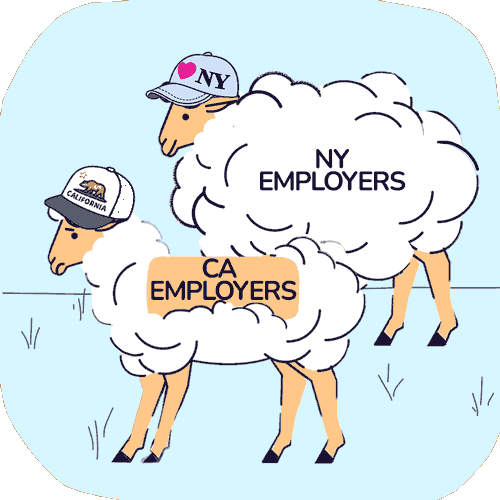CA State Fund Profits Exposes WCIRB's Manufactured Crisis

According to the Workers’ Compensation Insurance Rating Bureau (WCIRB), California workers’ comp insurers are caught in a death spiral of underwriting losses.
However, more precise and verifiable data suggest that this supposed crisis is imaginary.
The WCIRB’s latest Quarterly Experience Report projects a 127% combined ratio for California workers' compensation insurers in 2024, meaning that the WCIRB projects insurers paid $1.27 in expenses for every $1.00 of premium earned. The seemingly dire news prompted one defense attorney to claim:
“...the current [CA] workers’ compensation market is experiencing a 25-year storm.”
This “research” would seem catastrophic…if it reflected reality rather than projections based on self-reported, unverifiable data from the WCIRB’s insurer members, which stand to profit from California employers paying higher premiums.
Data from the National Association of Insurance Commissioners (NAIC) tell a radically different story. A recent NAIC report indicates significant profitability for California’s top comp insurers, including the “insurer of last resort,” the California State Compensation Insurance Fund (CA State Fund).
According to the NAIC, California’s top 10 workers' compensation insurers all reported healthy loss ratios in 2024. Most notably, CA State Fund posted a 29.2% loss ratio, the lowest in the market. That means for every dollar CA State Fund collected in premiums, only 29 cents went to claim costs.
Unlike the WCIRB’s numbers, the data that inform NAIC reports are confirmable and subject to standardized accounting practices.
NAIC research, as well as reports from the National Council on Compensation Insurance and others, indicate record profits for workers' comp insurers in California, making it hard to take the WCIRB’s catastrophizing seriously (unless you’re Insurance Commissioner Ricardo Lara, who took it seriously enough to impose an 8.7% rate hike on CA employers).
Below, we break down why it’s time to stop letting the WCIRB effectively dictate California public policy by manufacturing a crisis from which its members financially benefit.
WCIRB Projections vs. NAIC Data
The NAIC report shows that California’s top 10 workers' compensation insurers reported loss ratios that indicate profit, including the CA State Fund.
If any insurer should be struggling, it’s the CA State Fund. As California’s public, non-profit insurer of last resort, CA State Fund covers employers that private carriers often reject. Yet, State Fund’s NAIC data suggests remarkable stability and profitability.
CA State Fund’s success comes as no surprise to daisyNews. The insurer is proof that consistent competence, responsiveness to providers, and excellent Electronic Data Interchange (EDI) performance are compatible with profitability.
Even carriers with higher ratios, like AmTrust (68.4%) or ICW (53.7%), reported results consistent with profitable operations. Throw in insurers’ profits from investments and Scrooge McDuck-level cash reserves, and it’s absurd to conclude that California workers’ comp isn’t highly profitable.
The NAIC profit and loss ratios clearly show that California insurers are thriving. So why do the WCIRB and other (so-called) experts insist a perfect storm is brewing?
More to the point, why does California keep raising workers’ comp premiums when the rest of the country’s premiums are decreasing?
Why CA Should Not Trust the WCIRB
For WCIRB members, claiming the sky is falling seems to be a business model.
The WCIRB purports to measure whether insurers charge premiums high enough to cover the long-term costs of claims, without factoring in investment income, other profit sources, and rampant reimbursement discounting. The organization consistently cries poor on behalf of insurers, even when credible data from outside the WCIRB suggest otherwise.
The 2024 “combined ratio” data aren’t based on finalized financial results; by necessity, they are projections, estimates of 2024 costs that remain subject to revision as claims develop. The WCIRB is an organization whose members financially benefit from dire predictions, and that offers no transparency into the formulas behind their (consistently dire) projections.
Notably, the WCIRB’s own reports are careful to add fine-print caveats about the reliability and utility of its data. In report after report, the WCIRB reminds readers that it can “make no warranty” regarding its figures.
In fact, in the same Quarterly Experience Report in which the WCIRB projects its 127% combined ratio, the “Notice and Copyright” (below) declares that the WCIRB “cannot guarantee the accuracy of the data or the data source.”
While disclaimers stating that insurers bear the ultimate responsibility to report accurate data are common in reports like these, the WCIRB's insurer members are not subject to the statutory standards that govern NAIC reporting. These insurers simply voluntarily report to an organization of which they are members, and which openly does not verify the numbers.
Despite the facts, California and its Insurance Commissioner use the WCIRB’s projections to justify higher workers’ comp premiums for employers.
The WCIRB presents itself as a reliable and objective data source. But the organization’s structure and incentives tell another story:
- It’s funded and governed by insurers, not the public.
- The underlying data of its “research” and projections are not publicly visible or verifiable.
- Its members ultimately benefit from “research” that justifies rate hikes by suggesting dire straits for insurers (even as more transparent research suggests the opposite).
California workers’ comp stakeholders must insist on a higher standard of research, data collection, and accountability for the private organizations that quietly benefit from painting a skewed picture of the industry.
daisyBill makes comp billing fast, easy, and accurate. Click below to learn more:
TRY DAISYBILL
DaisyBill provides content as an insightful service to its readers and clients. It does not offer legal advice and cannot guarantee the accuracy or suitability of its content for a particular purpose.






.gif)